Group members:
Mansi Chottani, Kye Li Chia, Ruoxi Song
Research question:
How can we preserve traditions through games?
Our solution
Introducing traditional games to the public through a local traditional games fest
Date:
3rd July - 24th November 2023
After the tutorials, we noticed a weak connection between our traditional games design and gamifying cooking idea. This led to doubts about our design's potential and the relevance of preserving these games. To help us decide our next steps, we utilised the directed storytelling research method to explore traditional games and assess their worth in preservation, considering their declining popularity. Participants from diverse nationalities, including Chinese, Malaysian, Indian, and Slovakian, engaged in the research.
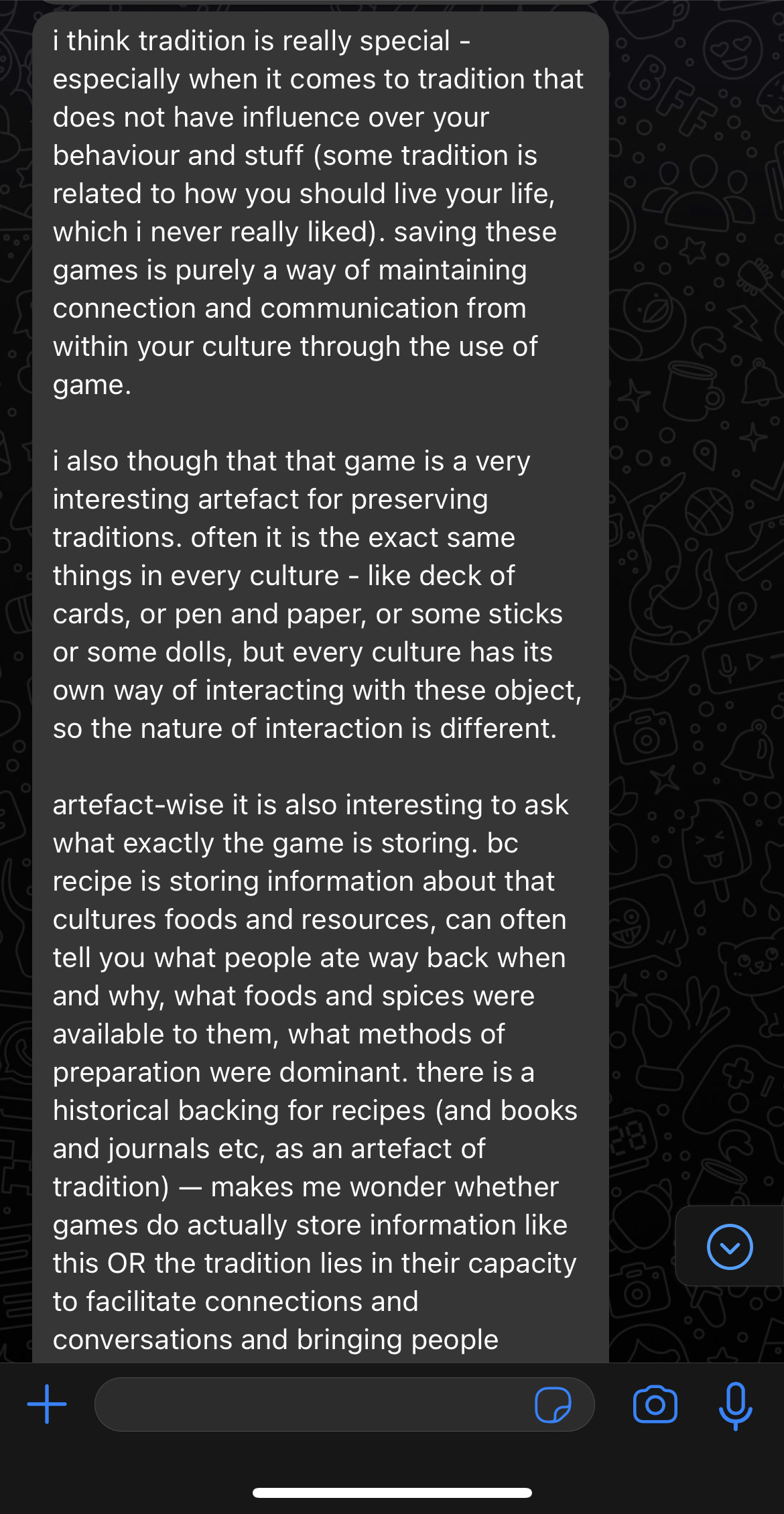
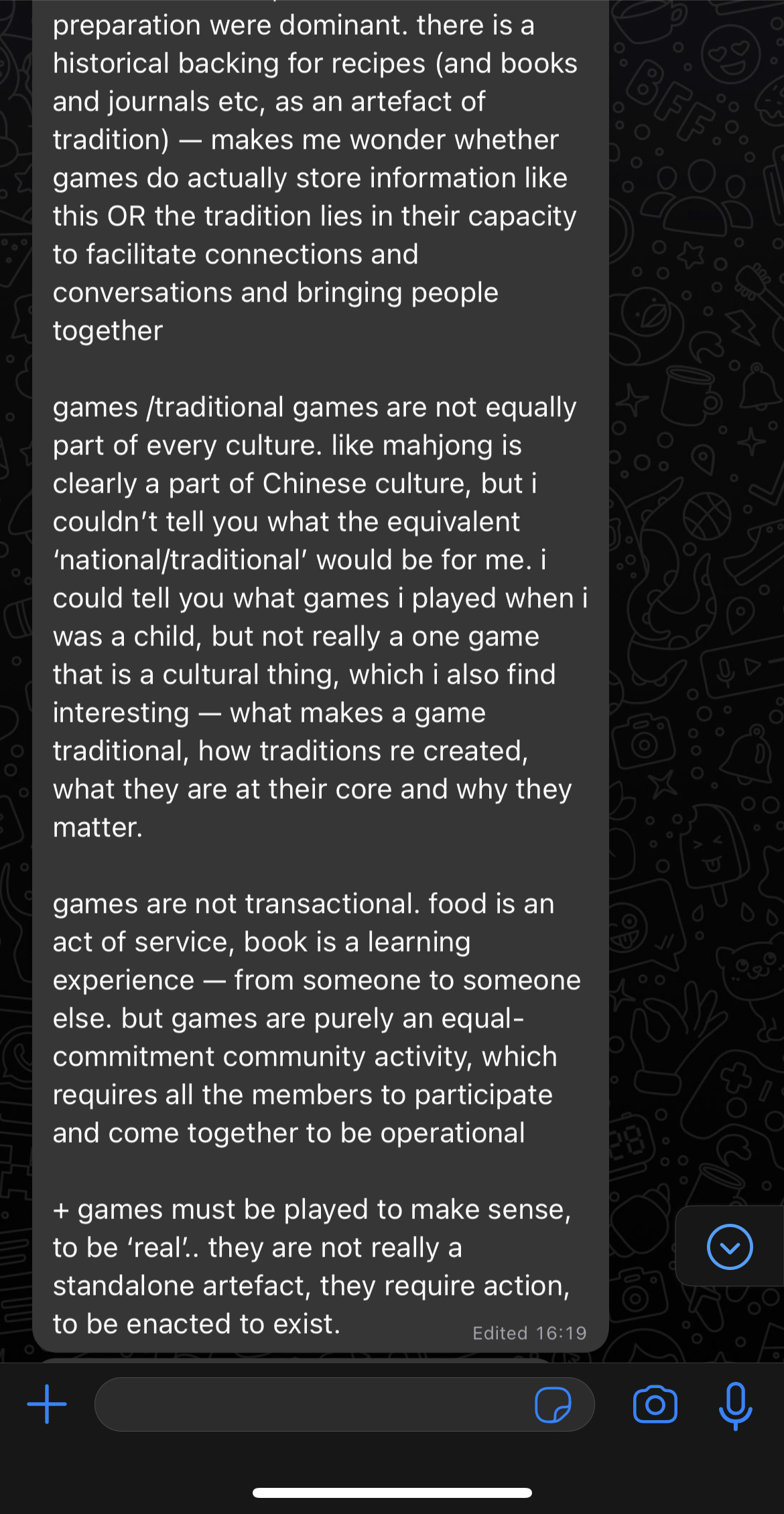

Guided by seven questions and additional tailored follow-ups, we gathered insights into the types of childhood games played, the locations, and the reasons behind their diminishing engagement. A deeper analysis revealed that traditional childhood games convey more than cultural connections—they contain information about climate, architecture, seasons, resources, and more. For instance, the Chinese game ‘Pulling Stem/拔根儿’, which involves a tug of war using a leaf's stem. This game symbolises the presence of four seasons, abundant tree-filled spaces, and a cultural for outdoor play among children. Moreover, it showcases the creativity of children in crafting games using natural resources.
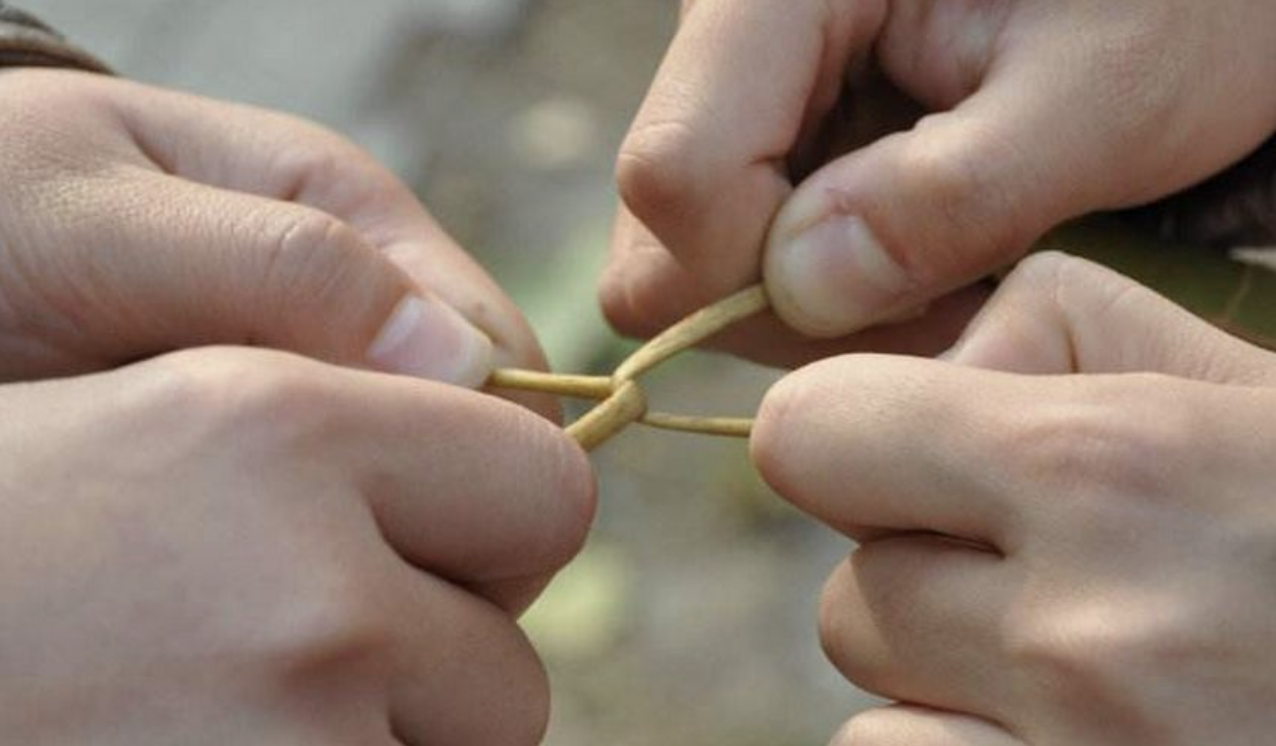
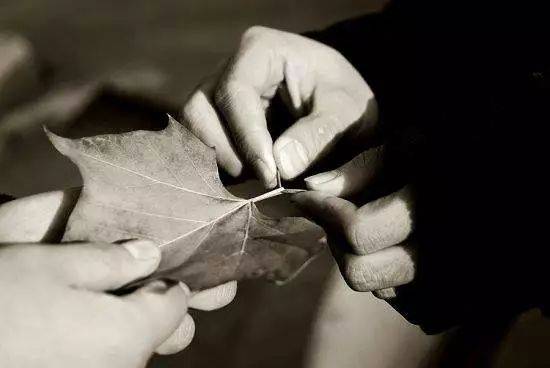
Directed storytelling sessions also uncovered that adults desire to play in playgrounds, especially after stressful days, but often feel self-conscious, particularly with children present. This led us to think about why isn't there a public playground designed specifically for adults?
Furthermore, we conducted on-site research by visiting public playgrounds to observe how individuals engage with the space. Notably, we discovered that these playgrounds often impose age restrictions at the entrance, prompting us to brainstorm and prototype designs tailored to adult play areas.

During this exploration, we observed the widespread enjoyment of trampolines among kids and teenagers. Experiencing the fun ourselves, we envisioned integrating this playful element into urban walking. Our experiments included walking on curbs, trampoline jumping, and introducing hopscotch on a university campus. Notably, our observations revealed that people actively engage with and enjoy hopscotch when it's introduced in university settings.
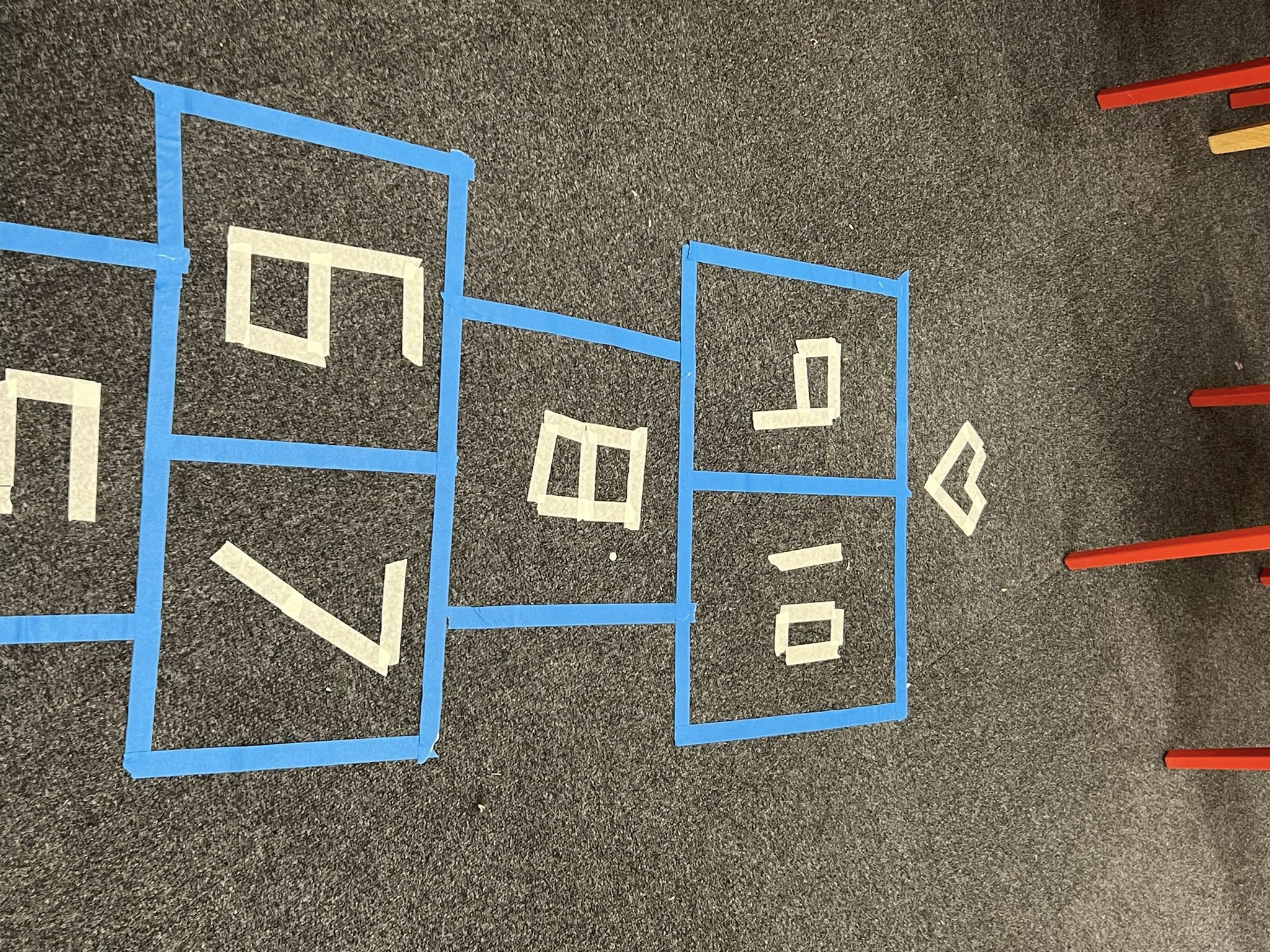
Prototyping traditional games like ‘Three Kingdoms/华容道‘ and wooden labyrinth ball steering allowed us to test interactions and identify suitable public spaces for playing these games. We considered the incorporation of traditional games into existing playground structures, such as placing wooden labyrinths on balancing structures. However, finding a suitable site for ‘Three Kingdoms/华容道‘, a game requiring time and mental effort, proved challenging.
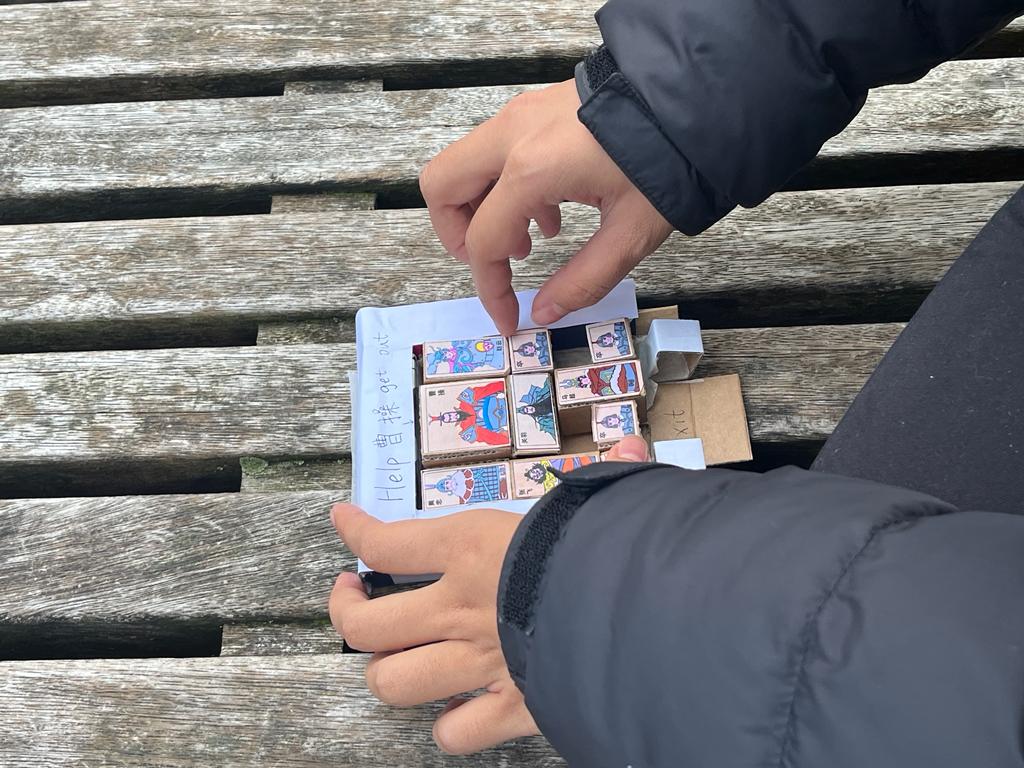
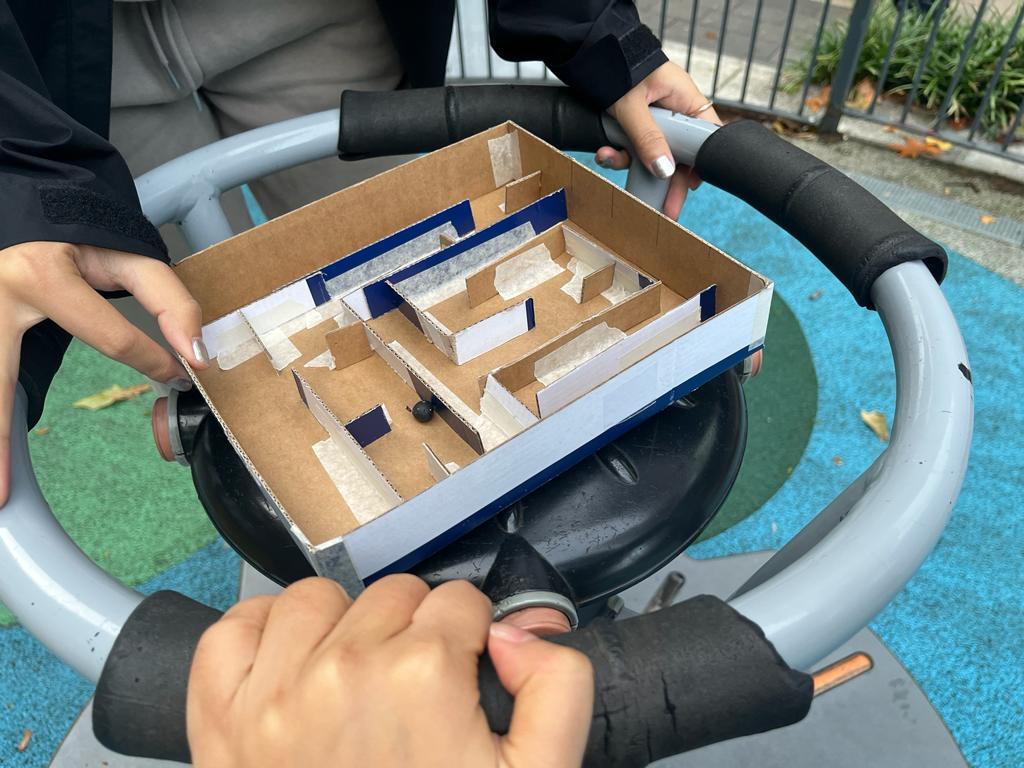
During our tutorial with Wan and Greg, we presented our ideas of adding a traditional element to existing playgrounds, hosting an exhibition about traditional games and their stories, and integrating play into everyday life.
Feedback:
- What’s the difference between urban structures and our proposal?
- Collect elements from different cultures and make it into an adult playground
- How are you gonna monitor it?
- What is it about? Cross cultural game or about storytelling?
Bibliography
拔根儿,原来这么有哲理! (2018) Sohu. Available at: https://www.sohu.com/a/279581749_500748 (Accessed: 28 October 2023).